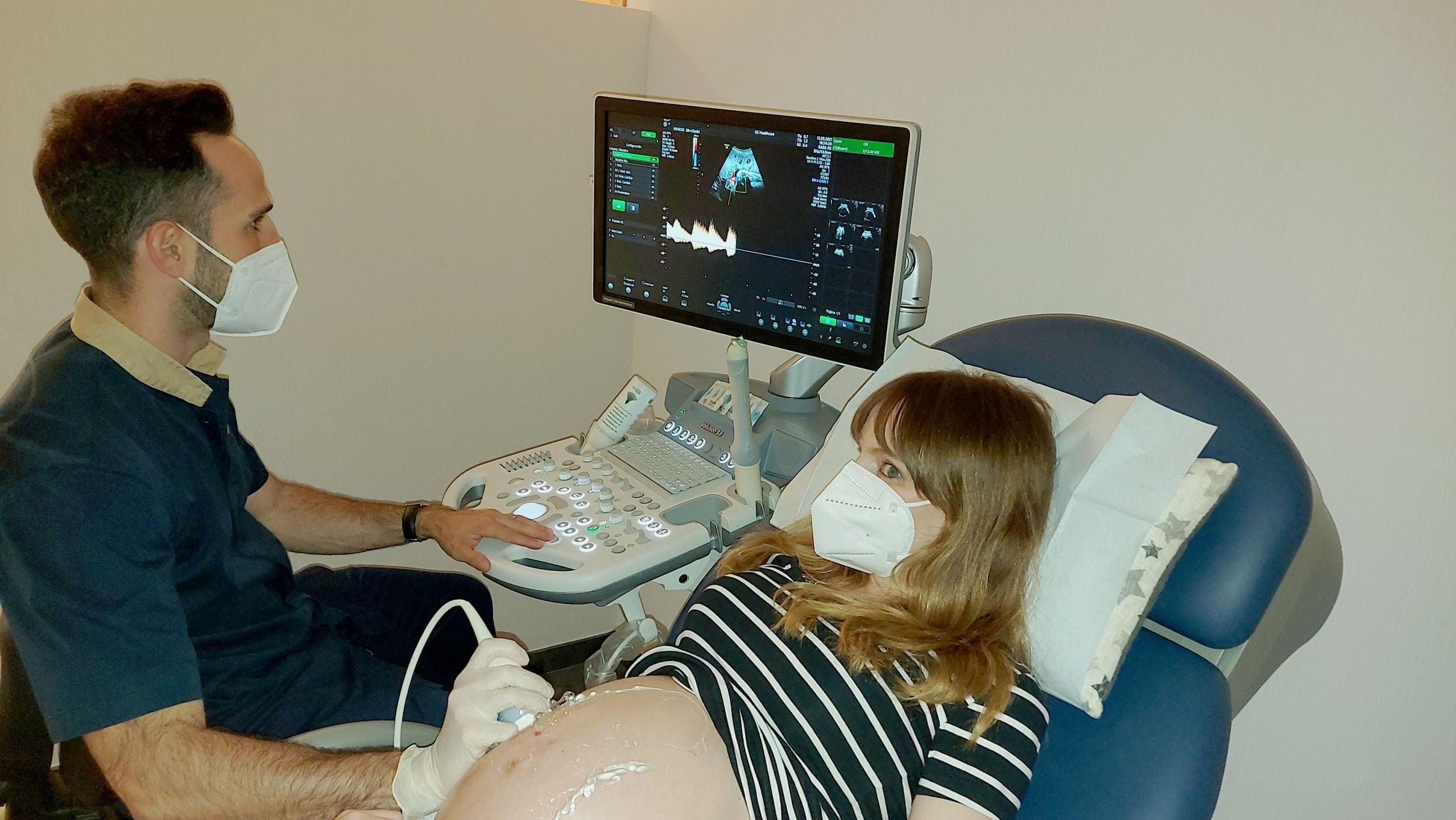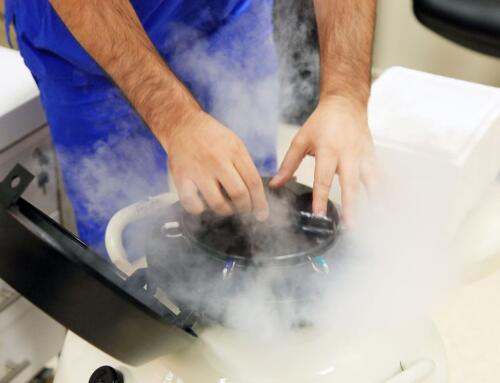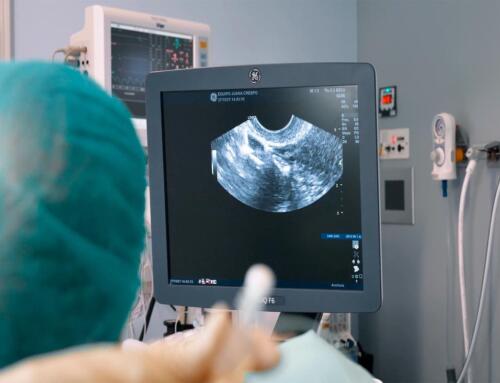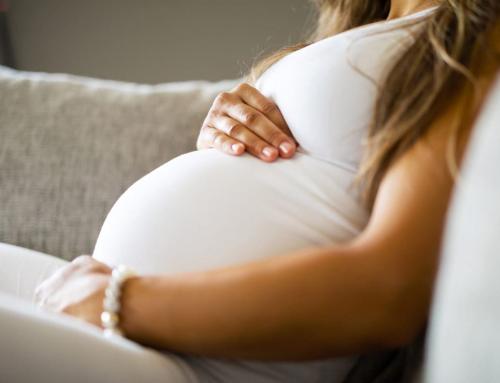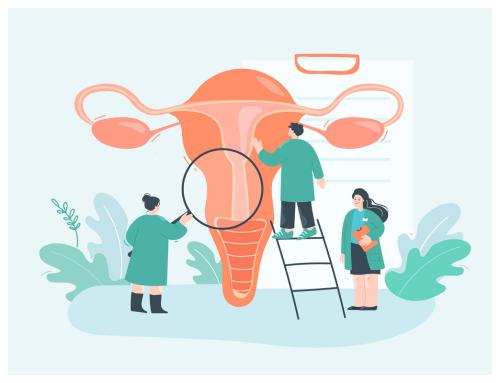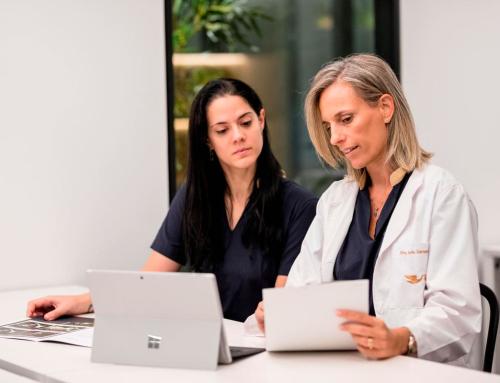Have you ever heard of preeclampsia during pregnancy? Do you know how serious this gestational complication is and how important it is to detect it early?
This disease can be serious for both the mother and the future baby. Fortunately, nowadays, we have a treatment that effectively reduces the chances of this happening, but in order to do so, the problem must be detected before it develops.
To carry out the detection of preeclampsia, in the Obstetrics Unit of Juana Crespo, we have developed an innovative and complete screening essential to detect this problem early and to avoid its consequences.
If you are pregnant and want to avoid preeclampsia and its complications as much as possible, we invite you to continue reading further.
What is preeclampsia during pregnancy?
Preeclampsia is a syndrome that develops only in pregnant women, usually from the 20th week of gestation.
It is characterized by high blood pressure, accompanied by proteinuria, which is high amounts of protein in the urine. In addition, there are usually other symptoms such as:
- Edema or swelling in the face, legs or arms.
- Sudden weight gain.
- Nausea or vomiting during the second half of gestation.
- Abdominal pain below the ribs, usually on the right side. It may originate in the liver, from where the pain radiates to other areas. It may be so intense that it is makes it practically impossible to lie on the right side.
- Low back pain, only if associated with other symptoms characteristic of preeclampsia may be cause for consultation.
- Persistent headache that does not improve with prescribed analgesics.
- Double vision, lights, flashes or loss of vision.
Although mild in most cases, preeclampsia can lead to serious complications if not treated properly.
The danger of preeclampsia is that the mother’s high blood pressure reduces the diameter of the small arteries, causing a decrease in blood flow to organs such as the kidney, brain and liver, as well as the placenta.
This is why, when the placenta does not receive enough blood from the mother, the baby stops receiving the necessary oxygen and nutrients for its growth and proper development. As a result, intrauterine growth is retarded, there is a greater probability of premature birth and, if the baby is born at term, he is usually born with a low birth weight.
What is your risk of preeclampsia?
We still do not understand with absolute certainty why the blood vessels that nourish the placenta are disturbed. What we do know is that preeclampsia affects about 5% of pregnant women who tend to have some of these risk factors:
- Being a first-time pregnant woman.
- Having a history of preeclampsia in the family and that the mother or sisters have had preeclampsia in one of their pregnancies.
- Being an age-limit. Being over 40 years old or, on the opposite side, being a teenager, increases the risk of suffering preeclampsia.
- Twin pregnancies.
- Having high blood pressure before and during pregnancy.
- Having type 1 or 2 diabetes.
- Kidney problems.
- Having suffered preeclampsia in a previous pregnancy. In this case, there is a 10 to 30% chance of it happening again in the current pregnancy. There is an even greater risk if the preeclampsia in the previous pregnancy occurred early.
Preeclampsia treatments
The best treatment to end the complications of preeclampsia is to give birth. Thus, once the baby is born, the symptoms usually subside. That is why, when a pregnant woman with advanced gestation has preeclampsia, labor is usually induced or a cesarean section is performed.
What happens is that many times labor cannot be brought forward because it is still very early and there are still several weeks of gestation, so the premature baby may have little chance of survival, in addition to suffering different neonatal complications. In this type of case, it is necessary to try to alleviate the symptoms by means of antihypertensive drugs and relative rest until the baby is mature enough to live outside the mother’s uterus.
Anticipating, the key to high-risk pregnancies
For some years now, pregnant women have been screened to find out who is most at risk for preeclampsia. When the gynecologist, during regular check-ups during pregnancy, detects that a woman is at high risk of preeclampsia, preventive measures are taken, such as an exhaustive control of blood pressure and weight, recommending a healthy diet rich in calcium.
It has been shown that in patients with a high risk result in the preeclampsia screening, taking acetylsalicylic acid (ASA, the same drug as aspirin) at night reduces the risk of suffering preeclampsia by up to 90% before 32 weeks of gestation, and by 60% before 37 weeks of gestation. These are the weeks of real concern since, in the case of severe preeclampsia, if the pregnancy is terminated, the newborn would be premature.
Antiplatelet drugs such as aspirin prevent blood clotting and have a role in preventing preeclampsia and its complications. But for it to be effective it must be started at the right dose before 20 weeks of gestation. That is why it is essential to anticipate and determine the risk before the disease appears.
But assessing only risk factors (hypertension, obesity, diabetes, etc.) to predict who may have this disease is not very effective. There are many patients who could be considered high-risk, and in fact are actually not.
That is why in Juana Crespo, Obstetrics Unit we have implemented a very complete screening that allows us to more effectively detect pregnant women who may develop preeclampsia.
Complete screening for preeclampsia in Juana Crespo
Our goal at Juana Crespo is that you give birth to a healthy baby. We are not only concerned that the gestation takes place succesfully, but we also try to make sure that the pregnancy evolves properly. As we are aware of the serious problems that preeclampsia can cause, our Obstetrics Unit has developed an innovative and complete early screening.
Routine pregnancy check-ups
Blood pressure, maternal weight gain, as well as fetal growth and uterine artery Doppler are assessed at all pregnancy check-ups in the clinic to diagnose preeclampsia and other associated complications, such as placental insufficiency and fetal growth defects, at an early stage.
Calculating the probability
In addition to taking into account the existence of risk factors in the pregnant woman, at Juana Crespo we can also estimate the probability of suffering preeclampsia with the Fetal Medicine Foundation’s calculator. To do this, we take the blood pressure in consultation, measure and weigh our pregnant women and measure the Doppler pulsation index of the uterine arteries by ultrasound. With this calculation, we obtain a detection rate of 70% for preeclampsia before 37 weeks and 83% for preeclampsia before 32 weeks.
Complementary tests
We can also determine a test for biochemical factors (PLGF and PAPP-A), thus increasing the detection rate to 90% for before 34 weeks, 75% for before 37 weeks and 47% for beyond 37 weeks.
This analysis combined with the measurement of uterine arteries, blood pressure and the assessment of risk factors if performed in the first trimester ( ideally at the 12-week ultrasound consultation) is the most reliable test and allows obtaining the results before week 16, almost the cut-off time for starting the administration of aspirin in cases where it is considered appropriate.
In Juana Crespo we recommend this screening to all pregnant women at the 12-week ultrasound, both to those who have many risk factors and to women who do not have them, since, as we have mentioned, sometimes this pathology can appear in low-risk women.
Doppler study of the uterine arteries
In cases of risk, in addition to taking acetylsalicylic acid at night, we recommend that our pregnant women routinely take their blood pressure and have some additional controls. This is the case of a Doppler study of the uterine arteries in week 20. If they are pathological, growth ultrasound scans are recommended at 24, 28, 32 and 37 weeks of gestation. In addition, it is advisable to add to the pregnancy control tests, the study of liver and kidney function and the protein/creatine ratio. These controls help us to diagnose preeclampsia early in case it appears, as well as other frequently associated complications, such as intrauterine growth retardation.
Maternal blood tests
At the clinic we also have a novel test for the diagnosis of preeclampsia by calculating the sFLT-1/PLGF ratio in maternal blood, to ensure the diagnosis of preeclampsia in doubtful, very early cases or in other situations. This test can be performed at any time if preeclampsia is suspected and is useful for optimal management of the pregnancy in the coming weeks.
If you are pregnant and meet any of the risk factors for preeclampsia, we recommend that you do not wait any longer to act before this disease compromises your pregnancy. Ask us what options you have to detect preeclampsia early in your specific case. Please contact us and ask for your first consultation by calling us at 961 042 557 or through our email: info@juanacrespo.es


